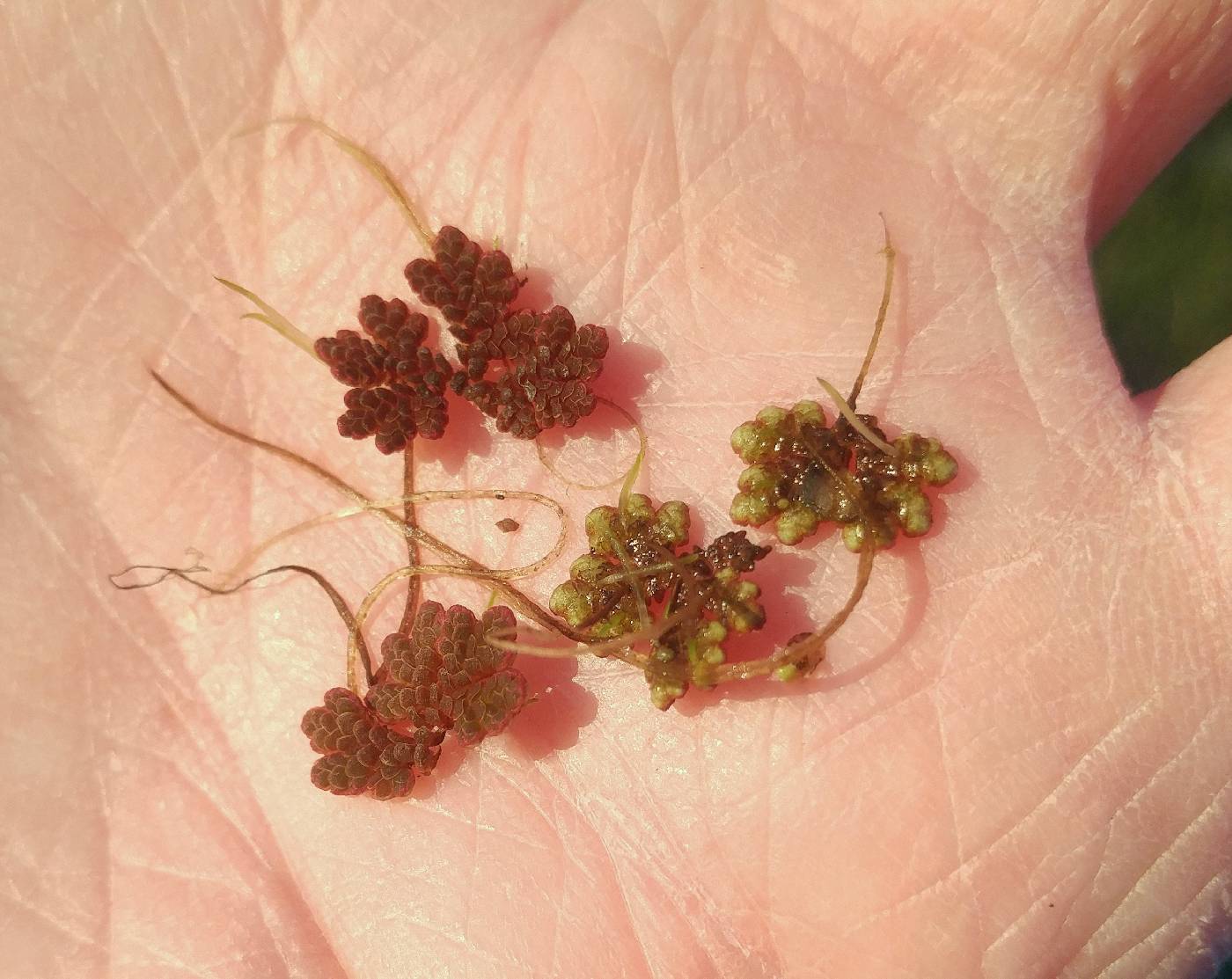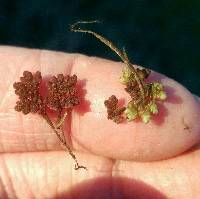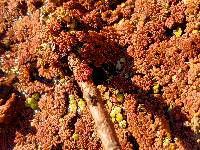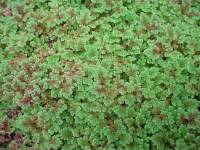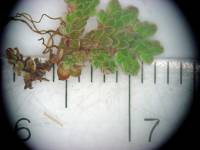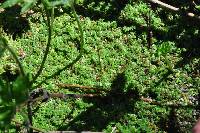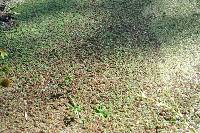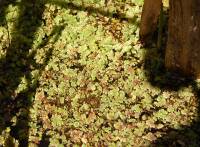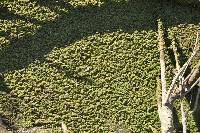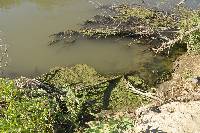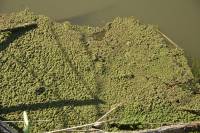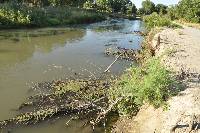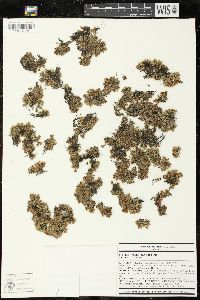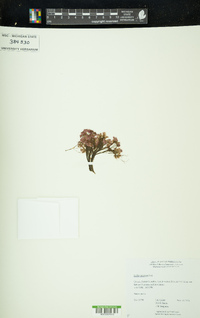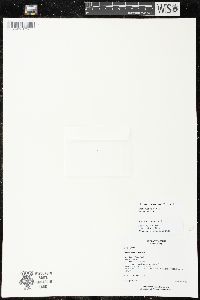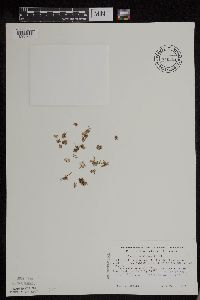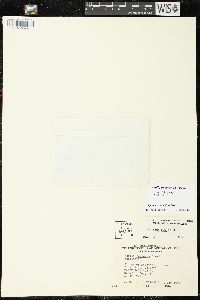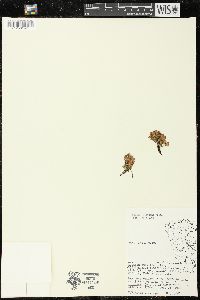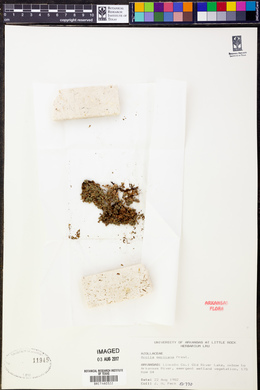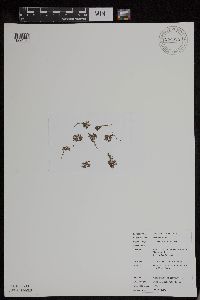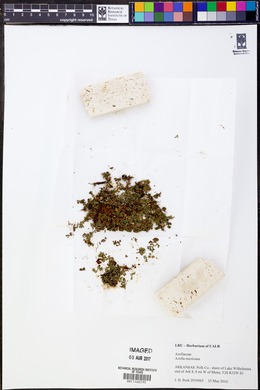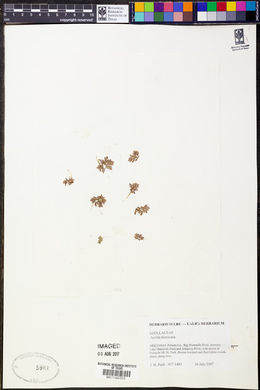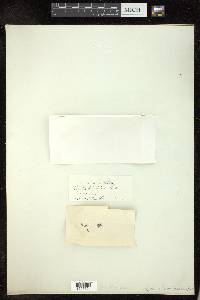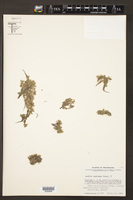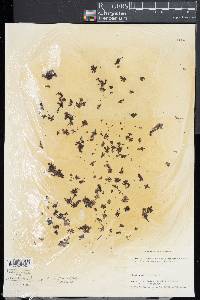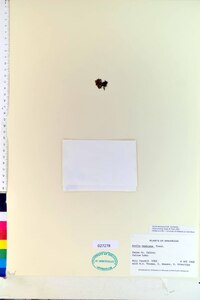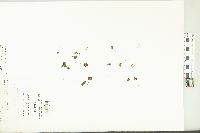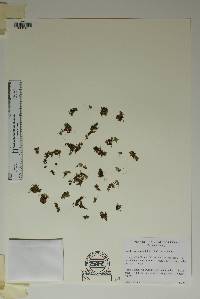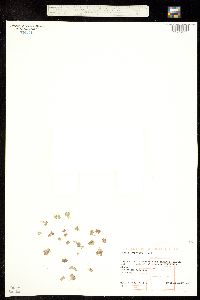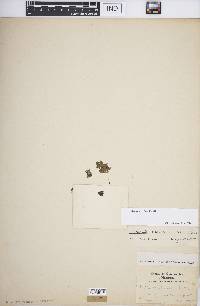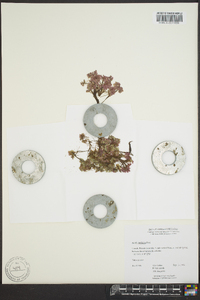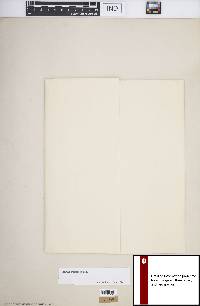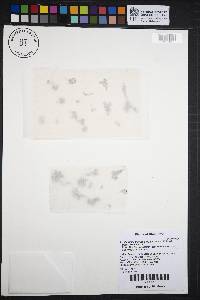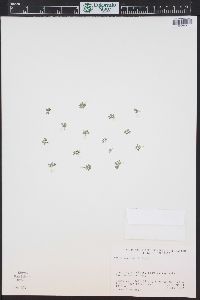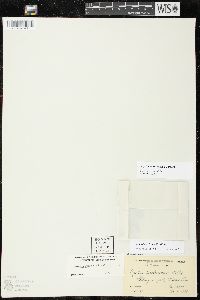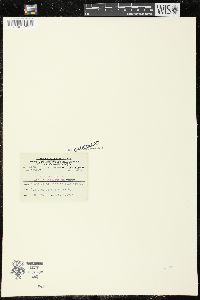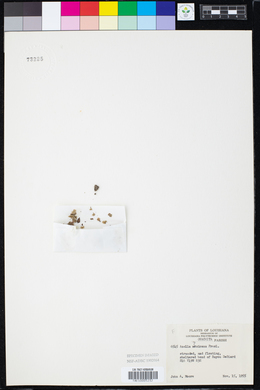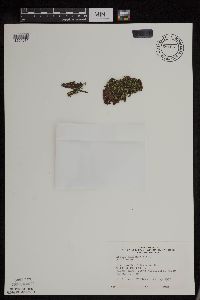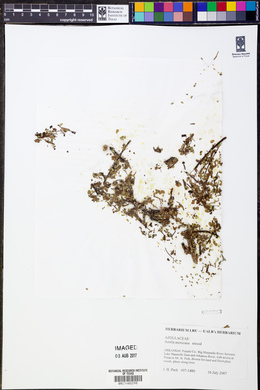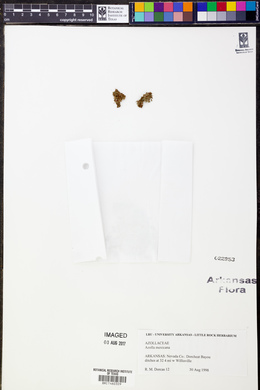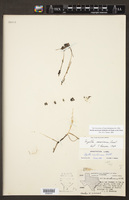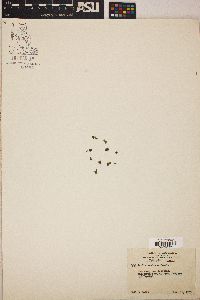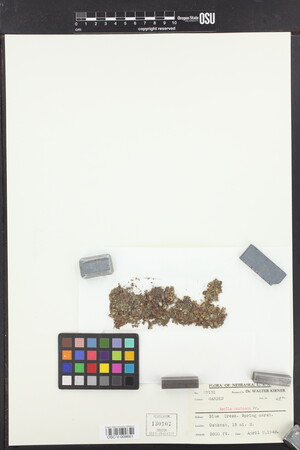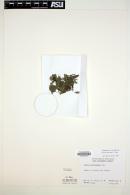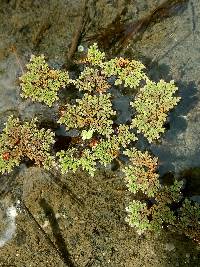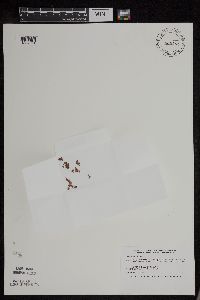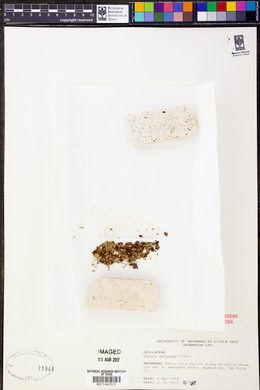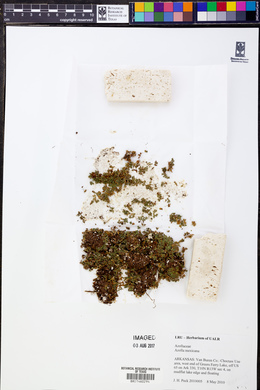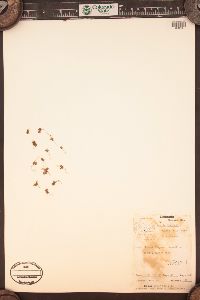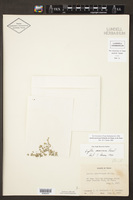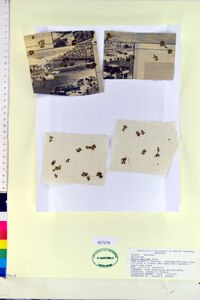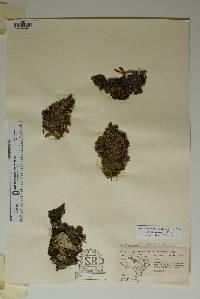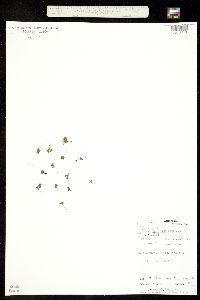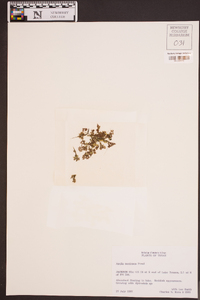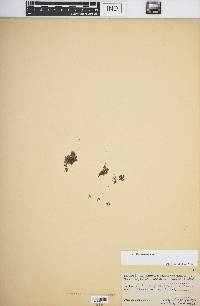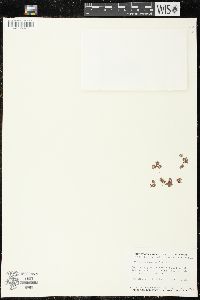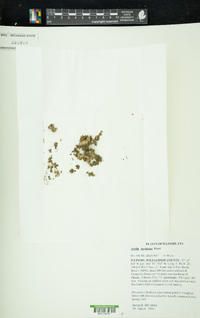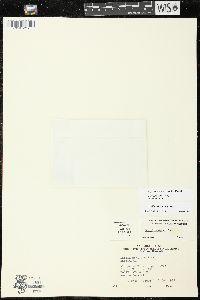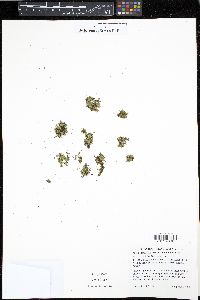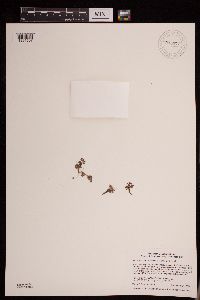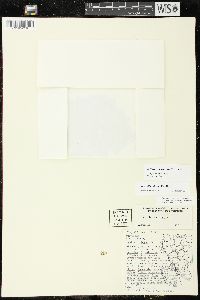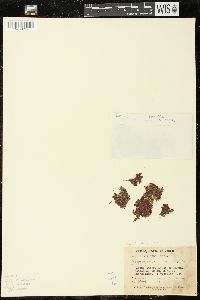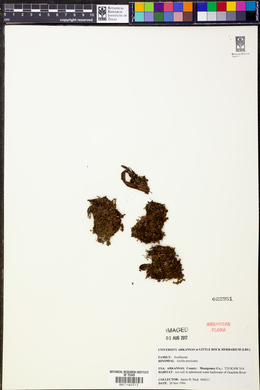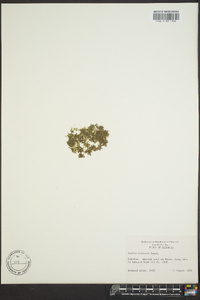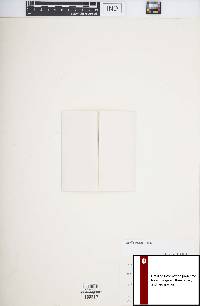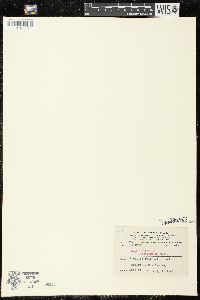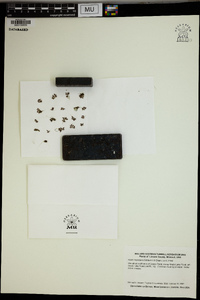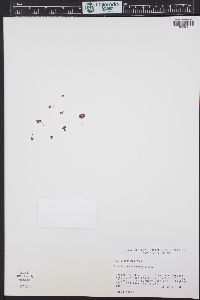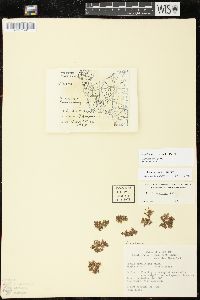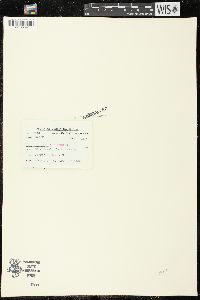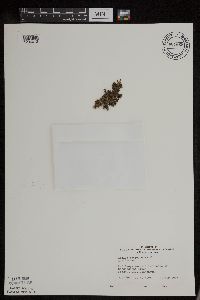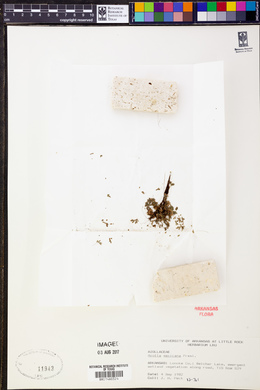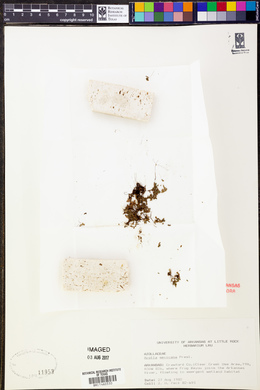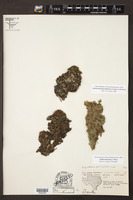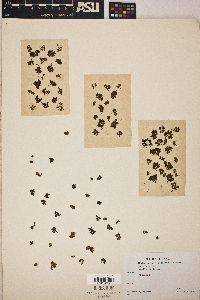
|
|
|
|
Family: Salviniaceae
Crested Mosquito Fern
[Azolla mexicana Schlecht. & Cham. ex K. Presl, moreAzolla portoricensis Spreng.] |
Plants green or often blue-green to dark red, some red-fringed leaves usually present in nature, free-floating or forming a multilayer mat to 4 cm thick in early summer; plants frequently fertile. Stems prostrate, 1--1.5 cm. Largest hairs on upper leaf lobe near stem 2(--3)-celled; broad pedicel cell often 1/2 or more height of hair, apical cell curved, with tip nearly parallel to leaf surface. Megaspores not covered with raised angular bumps, pitted and sparsely covered with a few long filaments extending over surface. Azolla mexicana is generally less cold tolerant and has a narrower environmental range than A . caroliniana . Both species are closely related and are similar vegetatively in culture. In the western United States, A . mexicana is often fertile. Distribution in the Great Plains area is tentative and needs further study. In the eastern United States, A . mexicana may have been occasionally introduced.
General: Aquatic annual or perennial ferns, generally fan-shaped, free-floating or forming small, often multi-layer mats 1-5 cm thick, occasionally stranded on muddy banks, plants green or often blue-green to dark red, some red-fringed leaves usually present in na Leaves: Sessile, alternate, often imbricate, in 2 ranks along the upper side of the stems, 0.6-2 mm wide, each leaf with 2 lobes, the upper (emersed) lobes greenish or reddish and photosynthetic, with a narrow colorless margin, several cells thick, bearing a colony of blue-green algae (Anabaena) in an ovoid cavity at the base of the lower side, lower lobes often floating or immersed, slightly larger than upper lobes, mostly not green (often colorless and translucent), 1 cell thick except at the base and generally cup-shaped, the largest hairs on the upper leaf lobes near the stem 2-3 celled, with broad pedicel cells often half as much or more than the height of the hair, apical cells curved, with the tips nearly parallel to the leaf surfaces. Sporangia: Plants heterosporous (producing 2 kinds of spores), proliferous by axillary fragmentation, frequently fertile, sporocarps occurring in pairs or tetrads at the base of lateral branches or terminal on leaf lobes, members of pair of same sex or of different Ecology: Found in ponds or slow streams, or on muddy banks, to 4,000 ft (1219 m). Notes: These small, feathery auqatic ferns seem to float on the water's surface, the leaves somewhat tirangular, thickish, and succulent-looking. Vascular Plants of the Gila Wilderness notes,"It bears two kinds of spore bearing structures, called sporocarps. The male sporocarp is much larger and contains many sporangia, which in turn contain many spores. The smaller female sporocarp contains only one spore. Azolla mexicana can also grow in streamside mud. Each leaf has two lobes, an upper green or red photosynthetic lobe that has a colorless margin, and a lower translucent cup shaped lobe. The upper lobe has a chamber within which Anabaena azollae, a nitrogen fixing cyanobacterium (blue-green alga) grows." FNA notes, "The species of Azolla are difficult taxonomically because (1) about 80% of the specimens lack sori, which are necessary for identification, and (2) the characteristics needed to identify the species are difficult to observe. A scanning electron microscope is needed to see sculpturing of the megaspores, and a light microscope is needed to see the number of cells per hair on the upper leaf lobe. (These hairs are best seen in profile on mature leaves; at least 40_ magnification is needed.)". Etymology: Azolla comes from the Greek azo, to dry, and ollumi or olluo, "to kill, destroy," in reference to the manner in which these plants die in dry conditions, while mexicana means of or from Mexico. Sources: FNA 1993, Jepson 2012, Kearney and Peebles 1969, Vascular Plants of the Gila Wilderness online, http://www.wnmu.edu/academic/nspages/gilaflora/azolla_mexicana.html FNA 1993, Jepson 2012, Kearney and Peebles 1969, Vascular Plants of the Gila Wilderness online, http://www.wnmu.edu/academic/nspages/gilaflora/azolla_mexicana.html Common Name: Mexican mosquito fern Wetland Status: OBL General: Aquatic annual or perennial ferns, generally fan-shaped, free-floating or forming small, often multi-layer mats 1-5 cm thick, occasionally stranded on muddy banks, plants green or often blue-green to dark red, some red-fringed leaves usually present in nature, stems prostrate, 1-1.5 cm long, with internodes less than 1 mm in length, with extensive subdichotomous branching, prostrate to nearly erect and kidney-shaped, usually not green, roots translucent to brown, lax, singular or in bundles and without branches, emerging at stem branch points, root hairs to 1 cm long, emerging from root caps. Leaves: Sessile, alternate, often imbricate, in 2 ranks along the upper side of the stems, 0.6-2 mm wide, each leaf with 2 lobes, the upper (emersed) lobes greenish or reddish and photosynthetic, with a narrow colorless margin, several cells thick, bearing a colony of blue-green algae (Anabaena) in an ovoid cavity at the base of the lower side, lower lobes often floating or immersed, slightly larger than upper lobes, mostly not green (often colorless and translucent), 1 cell thick except at the base and generally cup-shaped, the largest hairs on the upper leaf lobes near the stem 2-3 celled, with broad pedicel cells often half as much or more than the height of the hair, apical cells curved, with the tips nearly parallel to the leaf surfaces. Sporangia: Plants heterosporous (producing 2 kinds of spores), proliferous by axillary fragmentation, frequently fertile, sporocarps occurring in pairs or tetrads at the base of lateral branches or terminal on leaf lobes, members of pair of same sex or of different Ecology: Found in ponds or slow streams, or on muddy banks, to 4,000 ft (1219 m). Ethnobotany: Unknown Synonyms: None Editor: LCrumbacher2012 Etymology: Azolla comes from the Greek azo, to dry, and ollumi or olluo, "to kill, destroy," in reference to the manner in which these plants die in dry conditions, while mexicana means of or from Mexico. Plants seldom fruiting, a little larger than no. 1 [Azolla caroliniana Willd.], mostly 10-15 mm wide, ±pinnately branched when well developed, dichotomous only at the periphery; upper lf-lobes 0.7-0.9 mm, not much smaller than the lower, ±strongly imbricate; microsporocarps mostly a little over 1 mm thick; massulae 0.2-0.3 mm; glochidia with several cross-walls; megaspores 0.4-0.5 mm, the rounded base strongly pitted. Floating in still water; widespread in w. U.S., s. to n. S. Amer., and e. to Wis., Ill., and Ark. Rare. Gleason, Henry A. & Cronquist, Arthur J. 1991. Manual of vascular plants of northeastern United States and adjacent Canada. lxxv + 910 pp. ©The New York Botanical Garden. All rights reserved. Used by permission. From Flora of Indiana (1940) by Charles C. Deam This species is found in stagnant water along streams, about lakes, and in dredged ditches. It is doubtless much more frequent than our map indicates. I did not know the species until recent years and I suspect that many collectors are not acquainted with it. It is usually found associated with duckweeds. This species was first reported from Indiana by Prince Maximilian in 1839. It has been reported so far from Starke and St. Joseph Counties. ...... Indiana Coefficient of Conservatism: C = 4 Wetland Indicator Status: OBL |
|
|
|
This project was made possible in part by the Institute of Museum and Library Services [MG-70-19-0057-19].
Powered by Symbiota

